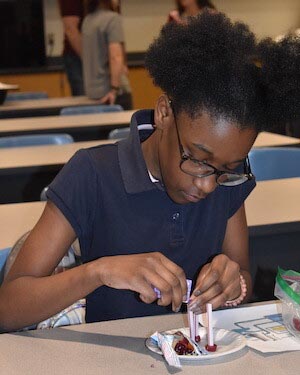Penn State researchers create educational program to inspire young engineers
9/2/2021
By Tessa M. Pick
UNIVERSITY PARK, Pa. — Engineering job availability is expected to grow in the next decade, according to the United States Bureau of Labor Statistics. However, according to a research team led by Penn State, current statistics suggest that engineering college attendance rates, lack of diversity and retirement rates may result in a shortage of employees in the industry.
Linda Hanagan, associate professor of architectural engineering at Penn State, leads a research team that is implementing an educational program that aims to increase the participation of low-income and numerically underrepresented groups in engineering education and career paths by providing opportunities to see themselves as future engineers. This program will teach engineering concepts to students at an early age, provide opportunities to engage with STEM professionals and help students imagine STEM fields as careers aligned with their personal goals and interests. The program will also help students develop transferable skills, such as problem solving and career planning.
“It is imperative that young students, particularly in middle school, become aware of and interested in careers in engineering,” Hanagan said. “We created this program to target young students and teach them engineering concepts early on, when they are just starting to form their own opinions.”
Building off research funded by the Talent Search Program that is housed in the Office of the Vice Provost for Educational Equity at Penn State and by the 2020 Research Opportunities for mid-Career Knowledge EnhancemenT (ROCKET) Seed Grant, Hanagan and Allison Godwin — co-principal investigator from Purdue University who specializes in engineering identity — recently received funding from the National Science Foundation to further their collaborative project.
Hanagan’s team is collaborating with the Talent Search Program to support economically disadvantaged middle school students by introducing them to engineering activities related to building design. The program uses learning modules to relate architectural engineering core concepts, skills and careers to familiar everyday concepts, such as buildings. The program’s learning modules will be augmented by mentoring activities with local building industry professionals to highlight the vast career opportunities in STEM and the impact engineers have on the communities in which they live and work.
“Middle school is a pivotal time for students to gain awareness of STEM topics,” Hanagan said. “However, opportunities to engage in engineering are often lacking or nonexistent.”
Hanagan’s team includes Laura Yong, an architectural engineering graduate student at Penn State, who is currently working on the implementation of the pilot program — the Middle School Architectural Engineering Pilot Program — for her thesis proposal.
“Most students start learning about engineering in post-secondary education,” Yong said. “By then, students would have made academic and career-related choices.”
Yong said it is important for programs like this to exist because many students lack role models in the engineering field, and that could hinder their motivation to pursue certain opportunities related to the field.
“Whether it is learning about specific engineering concepts, applications of engineering, the professional engineering workforce or engineering habits of mind, every child deserves the opportunity to learn, engage and excel in engineering,” Yong said.
Stephen Holoviak, senior director of the Talent Search Program, is also a collaborator for this project and said he is looking forward to seeing the benefits this program will bring to underrepresented students.
“The schools served by Talent Search projects are among the most poorly resourced in the country, with extremely talented students who are often overlooked, and therefore denied pathways to elite educational programs and careers,” Holoviak said. “We are very excited to be a part of this collaborative effort to provide for these students opportunities that are often taken for granted in more affluent districts.”




